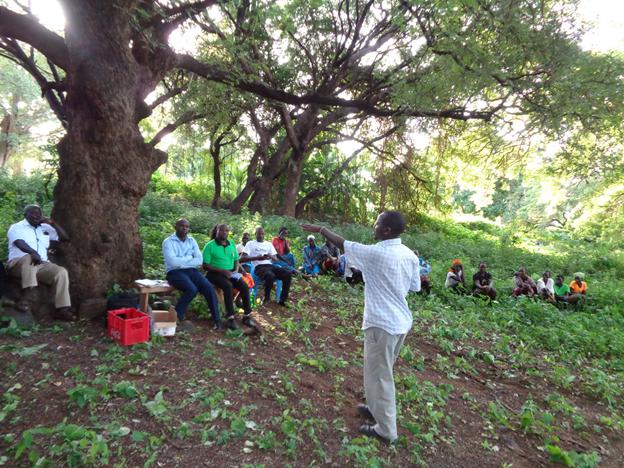Ezekiel Chebii
The main aims of the project are to enhance community awareness on economic, ecological and aesthetic importance of Emsos Swamp and empower them through educating on the need for sustainable utilization swamps resources and conservation of wetland.

Emsos Swamp is located south of Lake Bogoria national reserve. It’s rich in flora and fauna that forms extension of the Bogoria National reserve.The vegetation is dominated by a fringe of papyrus, riverine acacia, fig trees interspersed with shrubs, the evergreen vegetation is source of numerous springs that feeds into Lake Bogoria.
Emsos swamp and its catchment act as a wildlife refuge and dispersal area for animals from Lake Bogoria. Emsos swamp and its catchment is also a critical feeding, breeding and habitat for the endangered Greater Kudu (Tragel aphusStrepsiceros).
Emsos Swamp is bordered by three villages to the western side, the inhabitants of the village are mainly pastoralists, the first activity act has their socio-economic mainstay, due to frequent drought, and the residents have being grazing their livestock in the swamps hence depleting its resources due to overgrazing. Cutting of trees has been witness over time. The later activity has been fueled by charcoal burning around the catchment, if its goes unchecked the all scenario will lead to serious degradation of the wetland resources. The swamp is at verge of losing both ecological and aesthetic value. Therefore an integrated approach of conserving and protecting the fragile ecosystem while proving the necessary ecosystem services to the community involving ecotourism, cultural tourism, sustainable agriculture and community conservation initiatives is needed.
The project therefore will help to empower the community to conserve and sustainably utilize the swamp resources. This will in turn improve the livelihoods of the community and conservation of biodiversity will be realized.
The project will support community through the following activities:
1. Community awareness and capacity building
2. Diversification of income generating activities as alternative livelihoods for the community- such as beekeeping, poultry keeping, ecotourism (walking trails and camping sites), fish farming and fruit tree farming.
3. Environmental education and strengthening of wildlife clubs-We will visit schools, strengthen existing wildlife clubs.